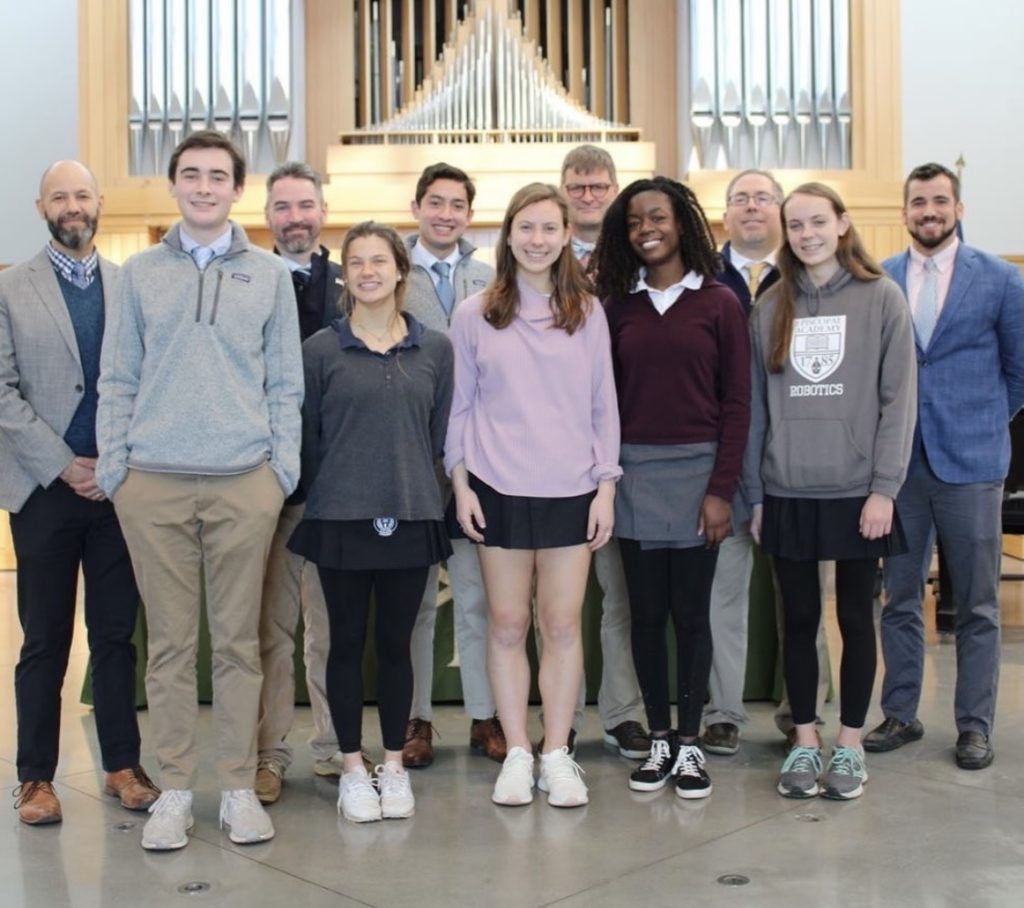Bridget Murphy ‘25 | Molly Ott ‘25
A re-evaluation of the EA dress code is currently underway, with a committee of students, faculty, and parents offering their commentary and thoughts. At this time, nothing has been finalized, and new opinions are still being discussed. The committee plans to finalize proposals and present them to the community by the end of this school year.

Photo courtesy of the @ea1785 Instagram
Committee meetings began with conversations about major disputes in the dress code, and the committee split itself into sub-committees accordingly. Michael Letts, Head of Upper School, states, “We zeroed in on four themes. One is the kilt. Another is the boys’ code because some people feel it’s more restricted, and there’s not a lot of options. Then, there was the nonbinary approach, asking whether we need gender identification or can we have one code. The other one is outerwear, sweatshirts, and jackets. There were student, parent, and faculty representatives in each of those sub-committees.”
One of the main issues of the current dress code for parents and teachers is the length of kilts. Letts explains, “We have a lot of conversations about me and the Upper School being willing to give and take. That might be a slightly modified dress code for hot weather days for me. Knowing that we might have to ask you guys for other things like enforcing a kilt length.”
Kris Aldridge, Upper School History Teacher, comments on the kilt length discussions, saying, “It’s hard and fairly sensitive to address skirt length with any individual student, so I applaud the committee for trying to come up with a blanket statement about skirt length.” Anika Kakarla ‘23 adds, “I can understand why it might be difficult to enforce a certain skirt length because it would be uncomfortable for both the teacher and student. I know that there’s definitely a lot of controversy around the skirt length issue.”
Degendering the uniform has also been discussed; this would likely be two sets of clothing choices without having gender identification being a factor in that choice. Letts explains that this might be accomplished by “making sure that it’s not always a boys code and a girls code, maybe it’s just a code. As long as you are wearing these items for your torso and these items for your legs, you’re in the dress code.”
Elle Dupont ‘25, a member of the Dress Code Committee, comments that she felt it is “important to re-word the dress code to ensure it is inclusive to people who don’t identify as male or female.” Aldridge echoes this sentiment, saying, “I think that certainly there should be more flexibility to reflect a better balance. I also think it’s important to acknowledge gender fluidity. Degendering the uniform by having a set uniform for everyone would be a great idea.”

Photo courtesy of episcopalacademy.org
Although degendering the uniform is a priority for the committee, Letts explains that there are certain unchangeable aspects of the uniform that are core to the school, such as ties and special dress.
Inequity within the dress code from a gender standpoint and a cost standpoint are both issues that have been discussed. Some members of the community have criticized the current uniform for being too strict for boys and too flexible for girls. Brad Johnston ‘23 explains that “a girl could show up to school wearing what the guys wear, but a guy couldn’t wear what the girls wear.”
Aldridge comments, “It might be better to reconsider what the uniform is. To make it more of a professional look to the traditional male dress code and a less professional look to the traditional female dress code, a polo across-the-board might be one way to address that.”
Letts also explains that outerwear, such as sweatshirts, come at an extra cost, saying, “The issues that I have around some of the sweatshirts, even EA sweatshirts, is that those are not part of the dress code that you can get at Flynn and O’Hara where you purchase your kilts and your golf shirts. We don’t have that subsidized to some degree for students on aid.” Ultimately, Letts explains, “To me, the most important aspects when deciding on a new uniform are looking professional and equity.”
Many people in the community are interested in what the committee decides on. Kakarla says, “No matter what is proposed by the committee there are going to be people who are upset and people who are happy. It would be impossible to please everyone because everyone wants something different. I think that generally more students prioritize greater comfort whereas teachers prioritize professionalism. I just hope that the decision is inclusive to all people, and I’m curious to see what the committee has come up with.”